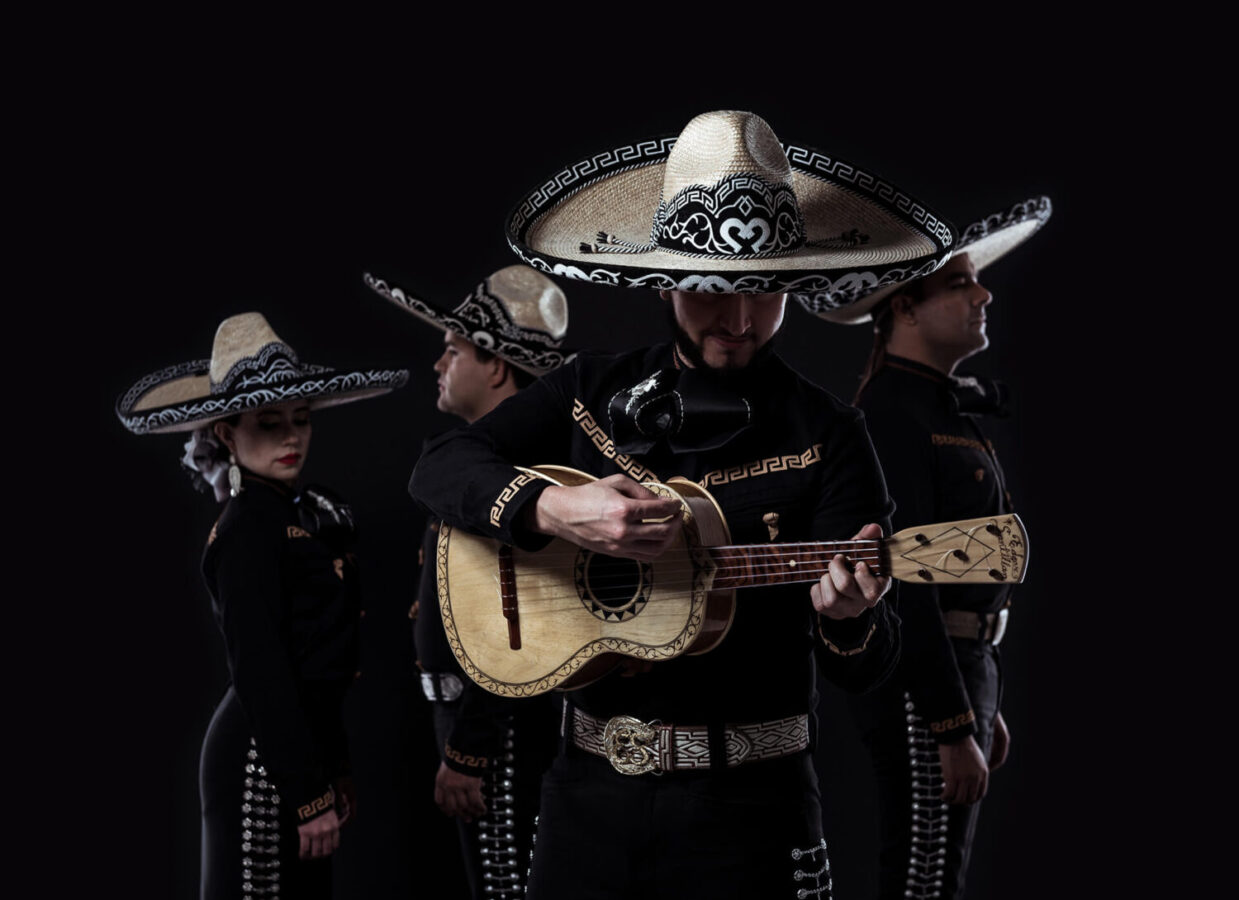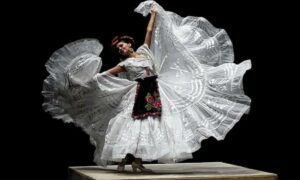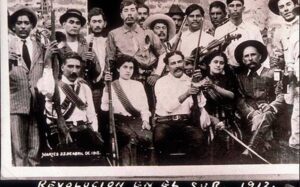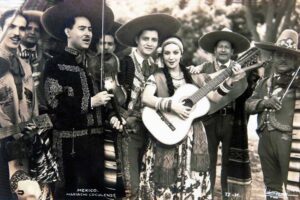That’s right dear foodies, Mexico’s flavor can be appreciated, not only by our tongues, but by our ears as well, and despite the fact, that Mariachi represents us Mexicans across the world, the sounds of Mexico are much more diverse.
Each Mexican musical variation manages to express a little about our culture and where we come from. Mexicans celebrate mostly anything, love, life, and even death, and that’s been shown in our music and lyrics since the beginning of time.
The first musical instruments were used to imitate animals and sounds of nature, later Mexicas used their version of music as a weapon to freak out the Spaniards who were about to fight them and Mayans used instruments like seashells to get closer to their gods, music that we can still appreciate in ancient territories like Riviera Maya.
You can actually listen to some ancient melodies at Parque Fundadores in Playa del Carmen or at some famous parks at their shows.
Well, I hope you are willing to add some Mexican-Latin all-time-hits to your playlist because we are about to introduce you to our favorite jams:
HUAPANGO
Pronounced “Wa pan goh”, also known as Son Huasteco because of its geographical zone, is one of the most traditional forms of Mexican Music. It originated in the Colony times when the indigenous people were introduced to Spanish poetry and European instruments, particularly guitars and violins. This type of music is mostly played in a trio huasteco comprised of a quinta huapanguera (traditional Mexican guitar with 5 or 8 strings and a deeper acoustic box) a jarana huasteca (traditional Mexican 5 string instrument) and a violin. The singing is usually done by two voices, one that leads and the other that replies.
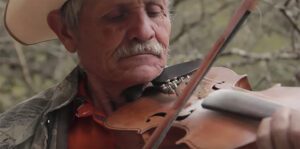
In the mid-twentieth century, Mexican composer and Orquestra Conductor, José Pablo Moncayo, as part of the cultural movement of the moment, that was looking to honor the indigenous Mexican heritage, composed his masterpiece titled “Huapango” a beautiful orchestral piece inspired by three traditional sones. This piece has been played by a lot of orchestras all over the world and still to this day is more recognized worldwide than our own National Anthem.
MARIMBA, THE MEXICAN XYLOPHONE
Ok, being 100% fair, when the Marimba was invented in Chiapas back in 1545, Chiapas was part of Guatemala, not Mexico, so it could be “The Guatemalan Xylophone” but Mexico wasn’t even an independent country back then, and since its independence, this culturally rich state came back to the Mexican Federation.

The Marimba is a percussion instrument with several wooden planks that give you musical notes, it’s an adaptation of the Xylophone, that probably came to the Americas through Africa, and it’s been used since its creation in several Mexican states for their traditional music, but Chiapas is its birthplace and over there it’s considered the queen of the local folklore. In the city of Tuxtla Gutierréz, Chiapas, there’s a park dedicated to this instrument called “El Parque de la Marimba” where every day at 6 p.m. there’s live marimba music.
SON JAROCHO
There’s no denying African influence in folk music all over the American continent, and in Mexico, this is particularly notorious in Veracruz, the entry port of the Spanish invasion and the thousands of African slaves that came with it. Son Jarocho, as its name says, is a variant of the Son that developed in Veracruz. Rhythmically similar to its huasteco cousin, it’s a ternary dance, however it’s easy to distinguish from Huapango because it doesn’t have violins. Son Jarocho is typically played with Jaranas of different sizes, including a bass Jarana also called Leona, and a harp.
source: jornadaveracruz.com.mx
Another iconic characteristic of Son Jarocho is the Zapateado dance, which adds the percussion element to the music and it’s typically danced at events called Fandangos. This dance is performed on top of a wooden hollow platform with the purpose of amplifying the sound made by the stomping with their shoes (zapatos).
CORRIDOS
The turn of the twentieth century brought with it the Mexican Revolution, a time of turmoil and civil war, bandits would raid entire villages in the name of the revolution while some intellectuals were trying to bring down a dictatorship, and what can the people do but sing about it.
source: elsoldemexico.com.mx
Corridos are Mexican tell-tale songs, narrating legends and stories about political events or historic battles, love affairs between notorious characters, murders, executions, and even natural disasters. This form of Mexican Lore is a way of keeping memories alive through time and generations, and it’s still very popular, particularly in the north of Mexico.
NORTEÑO
Product from an exotic combination of the musical genres of Bohemian and Czech immigrants, introducing the accordion, adding the rhythm of the polka to the popular music that already existed in our country. Baptized with this name because it got very popular in the northern states of Mexico such as Baja California, Chihuahua, Coahuila, Nuevo León, Sonora, and Tamaulipas, among others.
source: mexicotravelchannel.com.mx
Norteño music is played with bajo sexto and double bass, guitar, accordion, saxophone, drums, and snare. There are many variants depending on the region in which it is played, in Texas, the influence of North American music has led to the creation of a style called “Tex-Mex” led by the one and only, Selena Quintanilla, The queen of Tex-Mex. The fusion of norteño music with the Durango and Sinaloa band predominates in popularity.
Towards the 80’s and 90’s, bands like Los Tigres del Norte began to mix norteño music with other styles such as rock and cumbia, bringing great musical sensitivity to their songs, giving rise to a new era of norteño music, including great legendary groups like Intocable, Bronco, and Grupo Pesado.
BANDA SINALOENSE: THE MEXICAN BIG BAND
The Banda Sinaloense music, also identified as Tambora Sinaloense, with antecedents in the 19th century, although it appeared in its modern format at the beginning of the 20s in the rural area of the state of Sinaloa.
The characteristics of the Sinaloense geography, a territory between the sea and the Sierra Madre Occidental, in addition to the inaccessibility of the roads to the rest of Mexico, conditioned various rhythms of European origin to remain in force among the rural population. The singular accent of The Banda Sinaloense shows a lot of similarity with those of the German and French wind bands.
The ensemble is characterized by the presence of wind instruments and percussion. The musical acts are groups made up of between 10-20 musicians, some bands have a leading voice, while others resort to trios. Most lyrics portray reasons to celebrate life such as love and partying, but there are also sad and heartfelt love songs about disappointment or betrayal.
The basic instrumentation of the Sinaloa band is formed by: The Tuba, one or two alto saxes, also known as charcheta, clarinets, trumpets, tenor trombone with pistons or valves, bass drum or drum and snare drum.
source: mexicotravelchannel.com.mx
The first recordings date back to the 50s, although its great boom was in the 90s with the birth of record labels and the increase in the Mexican population in the United States, which led to the appearance of more bands, festivals, and shows.
Of the first outstanding groups we have, La Banda El Recodo de Cruz Lizárraga, followed by groups that were adding various instruments such as La Arrolladora Banda el Limon, la Gran Jenni Rivera, El “Gallo de Oro” Valentin Elizalde, and mi Banda el Mexicano.
WHAT ABOUT MARIACHI?!
Mariachi is not a type of music but more a type of ensemble. Mariachi music is originally a form of Huapango but nowadays many different boleros, sones, corridos, and other folk songs have been adapted to the Mariachi band.
The particular sound that gave rise to the Mariachi was born in Cocula, Jalisco. The citizens of this small town created the rhythmic base as an expression of worship, imitating the friars who used music to evangelize them.
source: tijuanotas.com
Mariachi music took over the country, especially as the soundtrack of parties and gatherings making various mariachi groups popular and by the Mexican Revolution, the mariachi was everywhere and something to be proud of. The sound fusion of guitars and violins with other indigenous instruments caused the birth of a new traditional regional genre.
In Cocula, Puebla, instruments such as the vihuela and the guitarrón were invented to replace the lute and the double bass. Becoming an essential part of the personality of the Mariachi. El Mariachi de Cirilo Marmolejo introduced the sound of the trumpet and the charro suit as a uniform for mariachi groups, ideas that were so successful that in a short time they were imitated by most Mariachis.
During his presidential campaign, Lázaro Cárdenas took Mariachi Vargas de Tecalitlán on tour throughout the country, and in the following years, ranchera movies ended up popularizing the genre.
The most representative stars of this traditional Mexican genre are Vicente Fernandez, Jose Alfredo Jimenez, Lucha Villa, and Javier Solis. Even Linda Ronstadt couldn’t resist the magic of Mariachi and ended up recording “Canciones de mi padre” in 1987 proud of her Mexican roots.
THERE’S A DIFFERENT FLAVOR FOR EVERY TASTE
We have plenty of Mexican music done in many other styles like Cumbia, Salsa, Reggae, Pop, Rock, Electronic and so much more. Whether you are visiting the Riviera Maya or any part of this beautiful country, it’s certain that you’ll listen to many of these sounds at some point, and probably as you try to sing along you’ll add some Spanish to your catch-phrases.
All my Loving, Foodies.
-Abbey

